Artificial Intelligence > QUESTIONS & ANSWERS > University of California, Berkeley COMPSCI 188. Introduction To Artificial Intelligence Homework 7_E (All)
University of California, Berkeley COMPSCI 188. Introduction To Artificial Intelligence Homework 7_Electronic Component. BY gradescope.com/courses. TOTAL POINTS 100 / 100 pts
Document Content and Description Below
Gradescope | View Submission https://www.gradescope.com/courses/19415/assignments/84503/submissions/10409235 1/11 Q1 Combining Factors 16 Points Given the factors and what is the resulting factor... after joining over ? Given the factors and and which factor will be created after joining on and summing out over ? Given the factors and what is the resulting factor after joining over and summing over ? Given the factors , , , what is the resulting factor after joining over and summing over ? P(A ∣ C) P(B ∣ A, C) C P(A, B, C) P(A ∣ B, C) P(A, B ∣ C) None of the above. P(A∣B) P(B∣C) P(C) C C P(B, C) P(B) P(C) None of the above P(A∣C) P(B∣A, C) A A P(C) P(B) P(B, C) P(A ∣ C) P(B ∣ C) None of the above. P(C∣A) P(D∣A, B, C) P(B∣A, C) C C10/22/2018 Gradescope | View Submission https://www.gradescope.com/courses/19415/assignments/84503/submissions/10409235 2/11 Q2 Variable Elimination Tables 20 Points Assume the following Bayes Net and corresponding CPTs. In this exercise, we are given the query , and we will complete the tables for each factor generated during the elimination process. After introducing evidence, we have the following probability tables. P(D ∣ A) P(C, D ∣ A) P(B, C, D ∣ A) P(B, D ∣ A) P(C, B ∣ A, D) ∗ P(A ∣ D) None of the above. P(C ∣ e = 1)10/22/2018 Gradescope | View Submission https://www.gradescope.com/courses/19415/assignments/84503/submissions/10409235 3/11 Q2.1 15 Points Three steps are required for elimination, with the resulting factors listed below: Step 1: eliminate . We get the factor Step 2: eliminate . We get the factor Step 3: eliminate . We get the factor . Fill in the missing quantities. (some of the quantities are computed for you) .41 .59 .2577 .5193 A f1(B) = ∑a P(a)P(B∣a) B f2(C, D) = ∑b P(C∣b)P(D∣b)f1(b) D f3(C, e = 1) = ∑d P(e = 1∣C, d)f2(C, d) f1(B = 0) = f1(B = 1) = f2(C = 0, D = 0) = f2(C = 1, D = 0) = f2(C = 0, D = 1) = 0.083 f2(C = 1, D = 1) = 0.1410/22/2018 Gradescope | View Submission https://www.gradescope.com/courses/19415/assignments/84503/submissions/10409235 4/11 .20442 Q2.2 5 Points After getting the final factor , a final renormalization step needs to be carried out to obtain the conditional probability . Fill in the final conditional probabilities below. .608 .392 Q3 Rejection Sampling 16 Points We will work with a Bayes' net of the following structure. f3(C = 0, e = 1) = f3(C = 1, e = 1) = 0.132 f3(C, e = 1) P (C∣e = 1) P (C = 0 ∣ e = 1) = P (C = 1 ∣ e = 1) =10/22/2018 Gradescope | View Submission https://www.gradescope.com/courses/19415/assignments/84503/submissions/10409235 5/11 In this question, we will perform rejection sampling to estimate . Perform one round of rejection sampling, using the random samples given in the table below. Variables are sampled in the order , , , , . In the boxes below, choose the value (0 or 1) that each variable gets assigned to. Note that the sampling attempt should stop as soon as you discover that the sample will be rejected. In that case mark the assignment of that variable and write none for the rest of the variables. When generating random samples, use as many values as needed from the table below, which we generated independently and uniformly at random from . Use numbers from left to right. To sample a binary variable with probability and using a value from the table, choose if and if . P(C = 1 ∣ B = 1, E = 1) A B C D E [0, 1) W P(W = 0) = p P(W = 1) = 1 − p a W = 0 a < p W = 1 a ≥ p10/22/2018 Gradescope | View Submission https://www.gradescope.com/courses/19415/assignments/84503/submissions/10409235 6/11 Enter either a 0 or 1 for each variable that you assign a value to. Upon rejecting a sample, enter its assigned value, and enter none for the remaining variables. For example, if C gets rejected, fill in none for D and E. A: 1 B: 0 C: none D: none E: none Which variable will get rejected? A B C D E None of the variables will get rejected10/22/2018 Gradescope | View Submission https://www.gradescope.com/courses/19415/assignments/84503/submissions/10409235 7/11 Q4 Estimating Probabilities from Samples 16 Points Below are a set of samples obtained by running rejection sampling for the Bayes' net from the previous question. Use them to estimate . The estimation cannot be made whenever all samples were rejected. In this case, input -1 into the box below. Estimation: .5 Q5 Likelihood Weighting 16 Points We will work with a Bayes' net of the following structure. P(C = 1 ∣ B = 1, E = 1)10/22/2018 Gradescope | View Submission https://www.gradescope.com/courses/19415/assignments/84503/submissions/10409235 8/11 In this question, we will perform likelihood weighting to estimate . Generate a sample and its weight, using the random samples given in the table below. Variables are sampled in the order A, B, C, D, E. In the table below, select the assignments to the variables you sampled. When generating random samples, use as many values as needed from the table below, which we generated independently and uniformly at random from . Use numbers from left to right. To sample a binary variable with probability and using a value from the table, choose if and if . Input Answers Here A: P(C = 1 ∣ B = 1, E = 1) [0, 1) W P(W = 0) = p P(W = 1) = 1 − p a W = 0 a < p W = 1 a ≥ p10/22/2018 Gradescope | View Submission https://www.gradescope.com/courses/19415/assignments/84503/submissions/10409235 9/11 1 B: 1 C: 0 D: 0 E: 1 What is the weight for the sample you obtained above? .64 Q6 Estimating Probabilities from Weighted Samples 16 Points Below are a set of weighted samples obtained by running likelihood weighting for the Bayes' net from the previous question. Use them to estimate . Input -1 in the box below if the estimation cannot be made. P(C = 1 ∣ B = 1, E = 1)10/22/2018 Gradescope | View Submission https://www.gradescope.com/courses/19415/assignments/84503/submissions/10409235 10/11 Estimation: .7857 GRADED 16 / 16 pts HW 7 (Electronic Component) STUDENT TOTAL POINTS 100 / 100 pts QUESTION 1 Combining Factors QUESTION 2 Variable Elimination Tables 20 pts 2.1 (no title) 15 / 15 pts 2.2 (no title) 5 / 5 pts QUESTION 3 Rejection Sampling 16 / 16 pts 10/22/2018 Gradescope | View Submission https://www.gradescope.com/courses/19415/assignments/84503/submissions/10409235 11/11 QUESTION 4 Estimating Probabilities from Samples 16 / 16 pts QUESTION 5 Likelihood Weighting 16 / 16 pts QUESTION 6 Estimating Probabilities from Weighted Samples 16 / 16 pts [Show More]
Last updated: 1 year ago
Preview 1 out of 11 pages
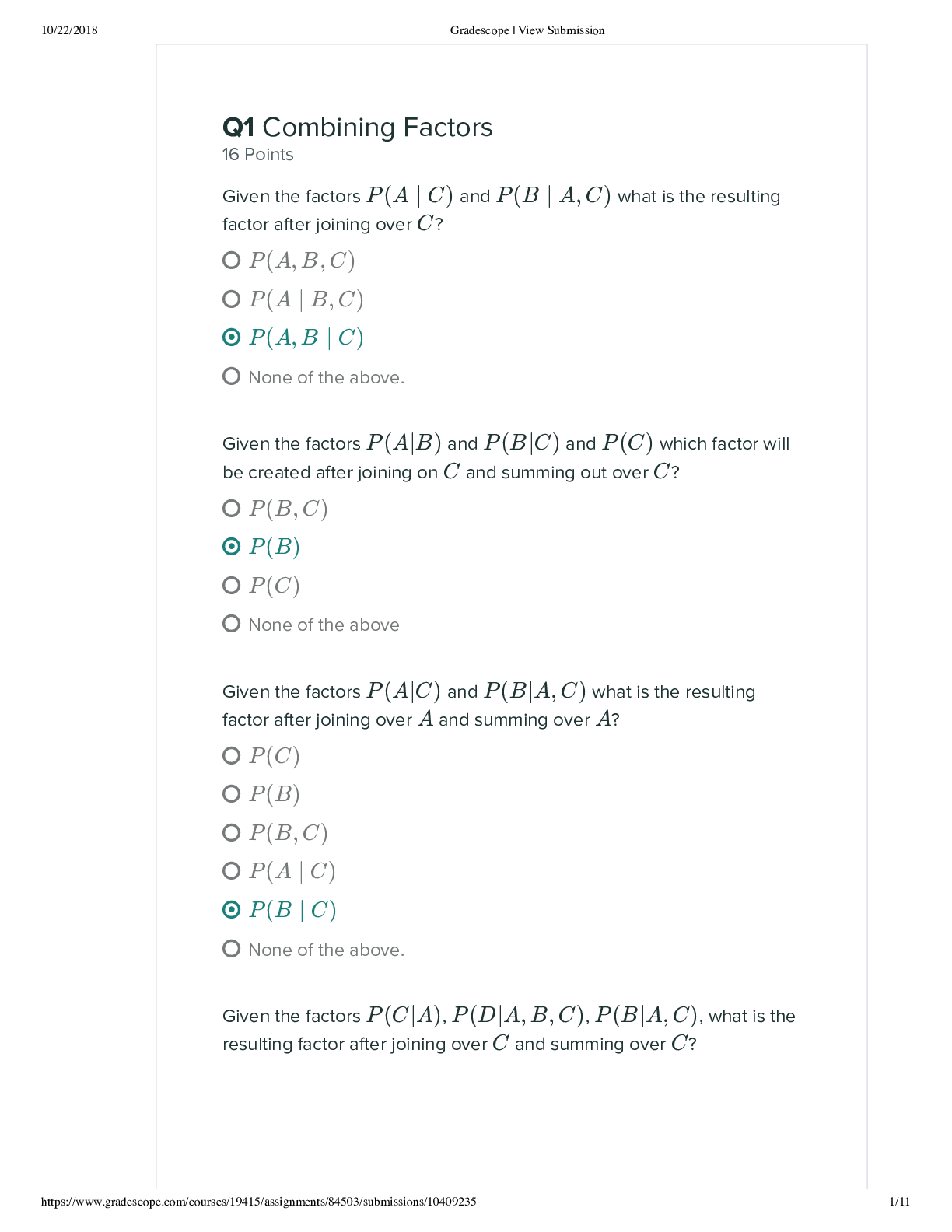
Reviews( 0 )
Document information
Connected school, study & course
About the document
Uploaded On
Aug 11, 2022
Number of pages
11
Written in
Additional information
This document has been written for:
Uploaded
Aug 11, 2022
Downloads
0
Views
108





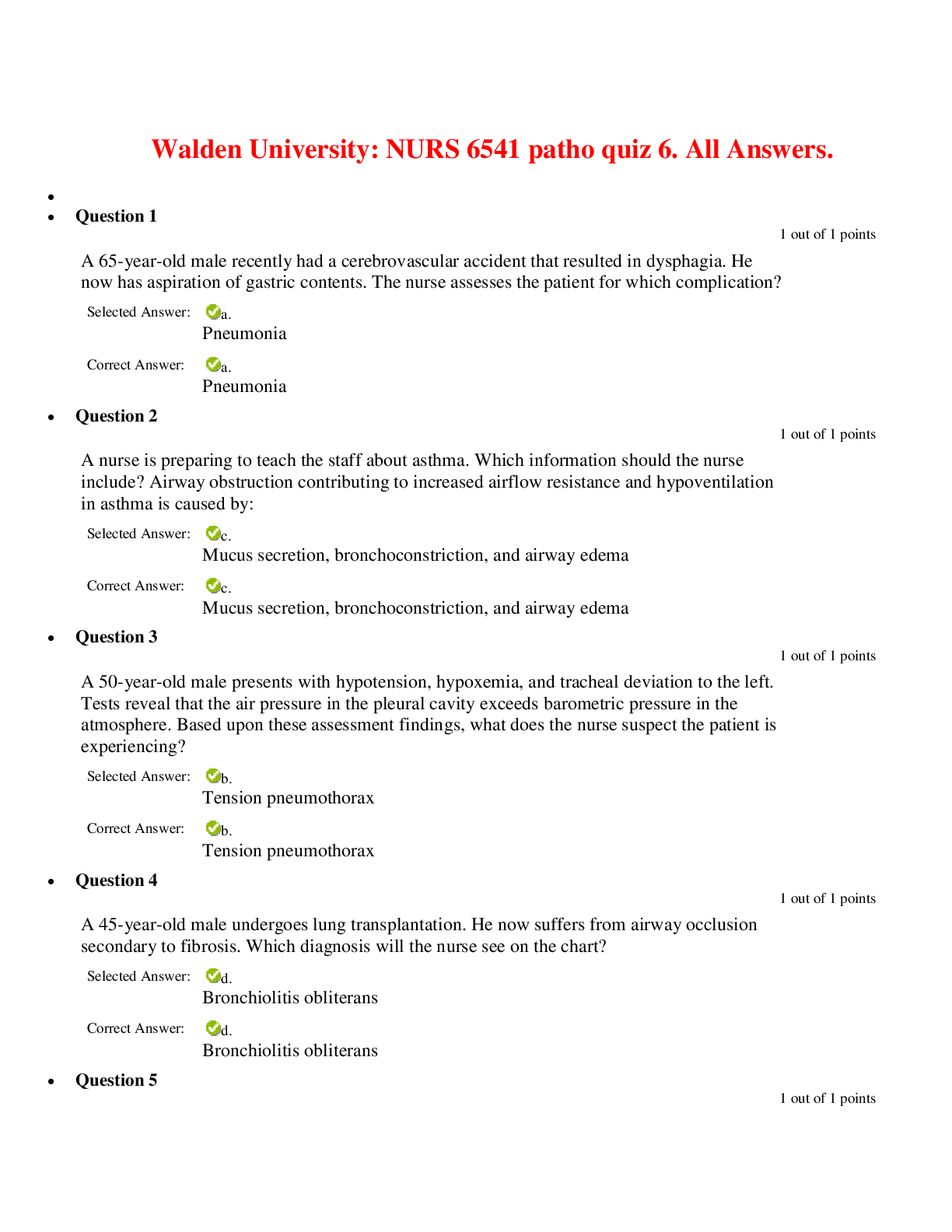





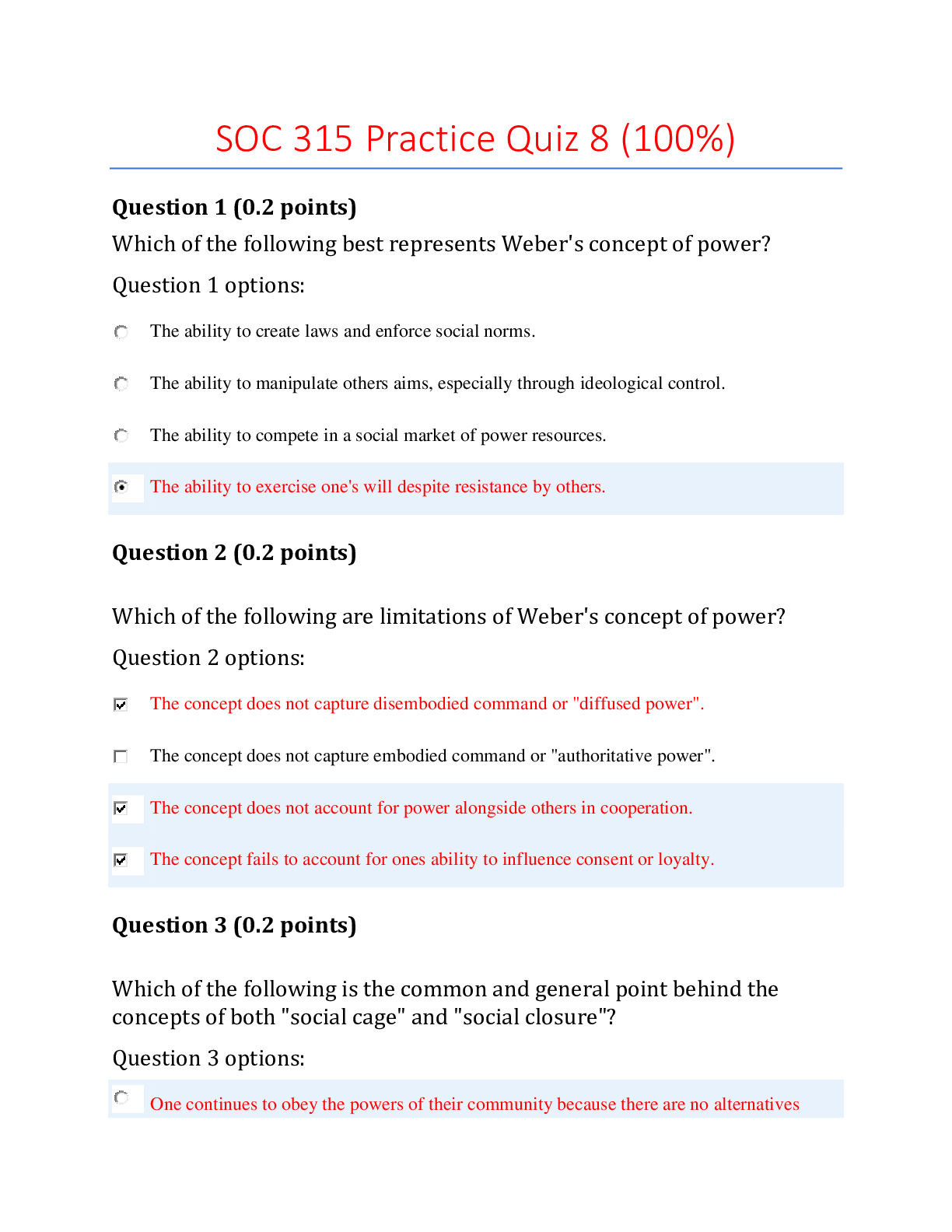
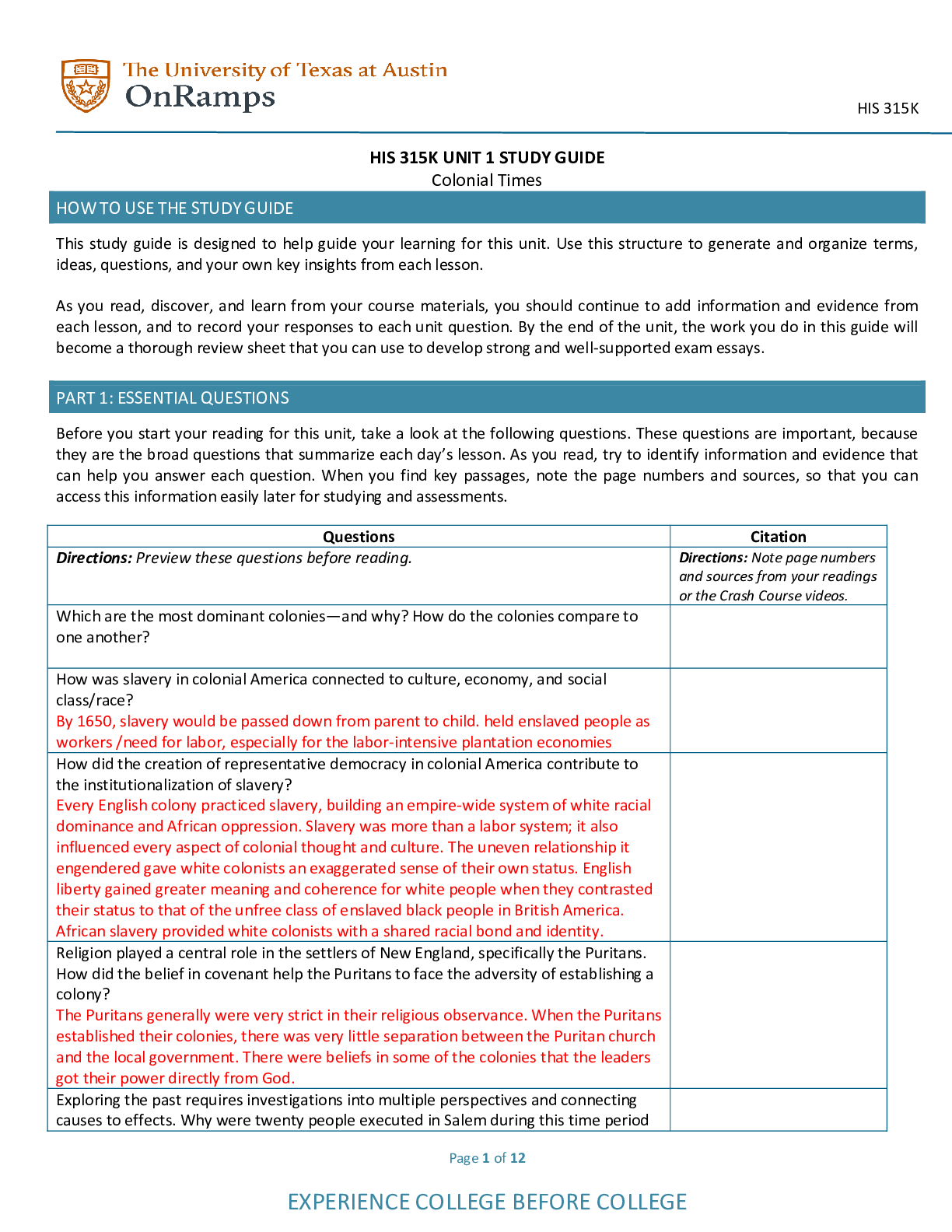
.png)

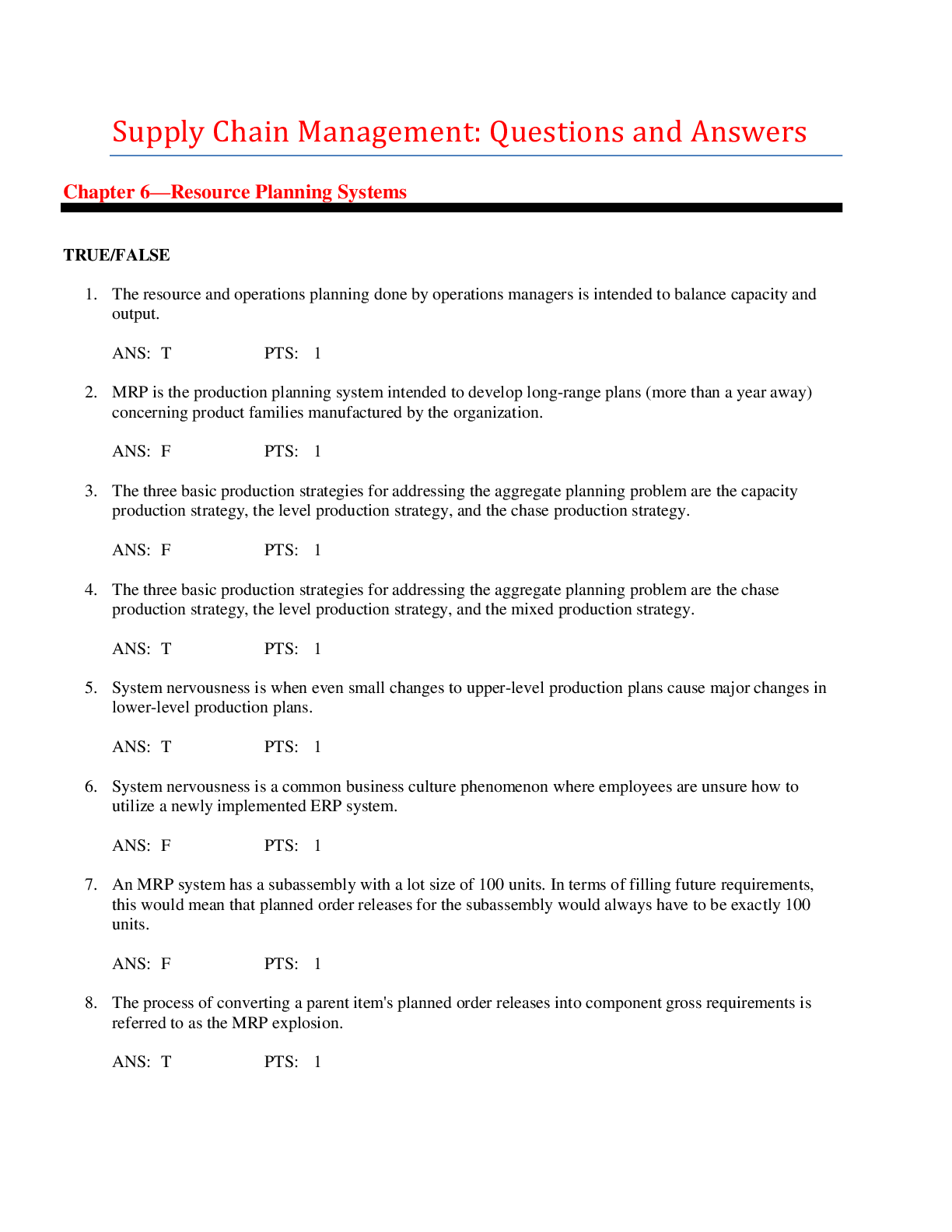
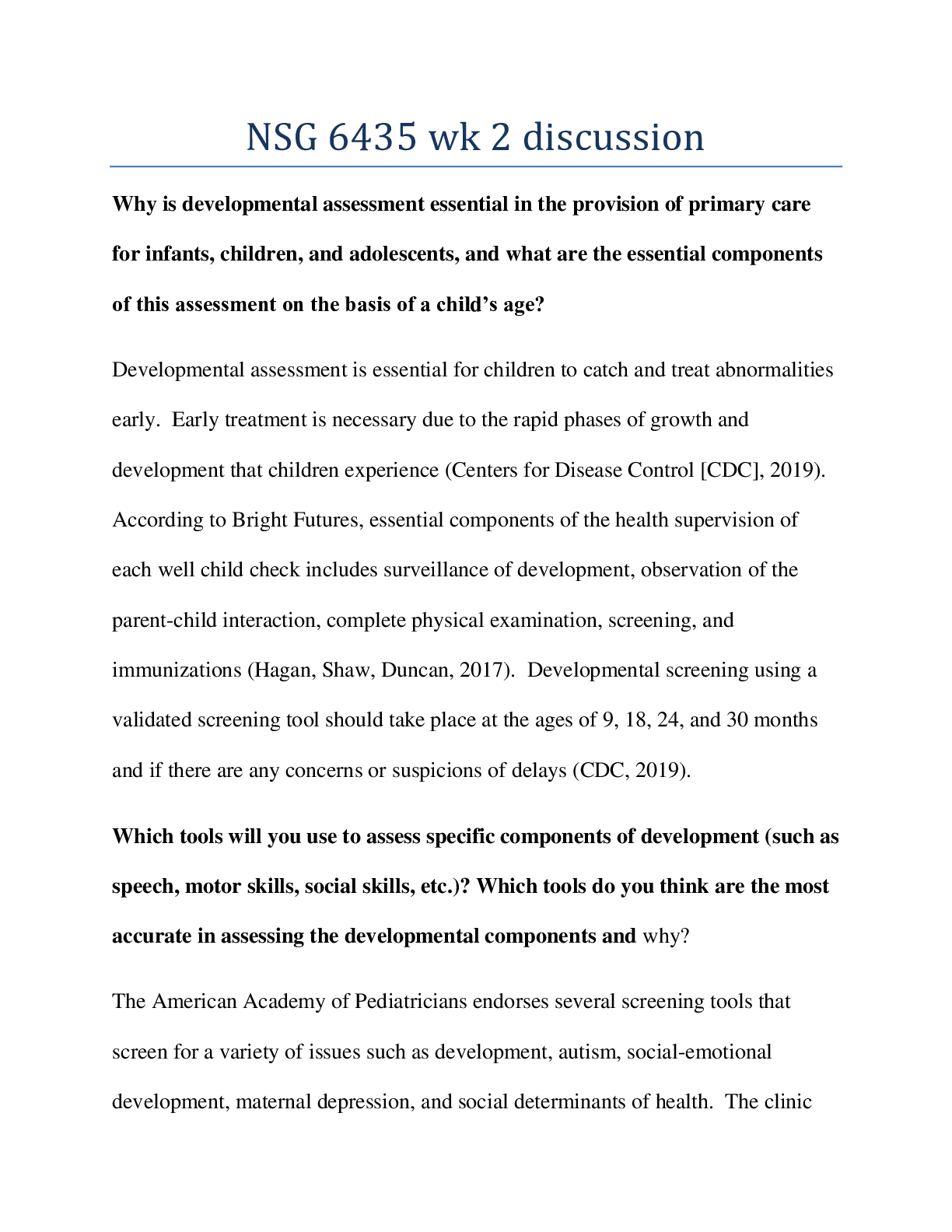
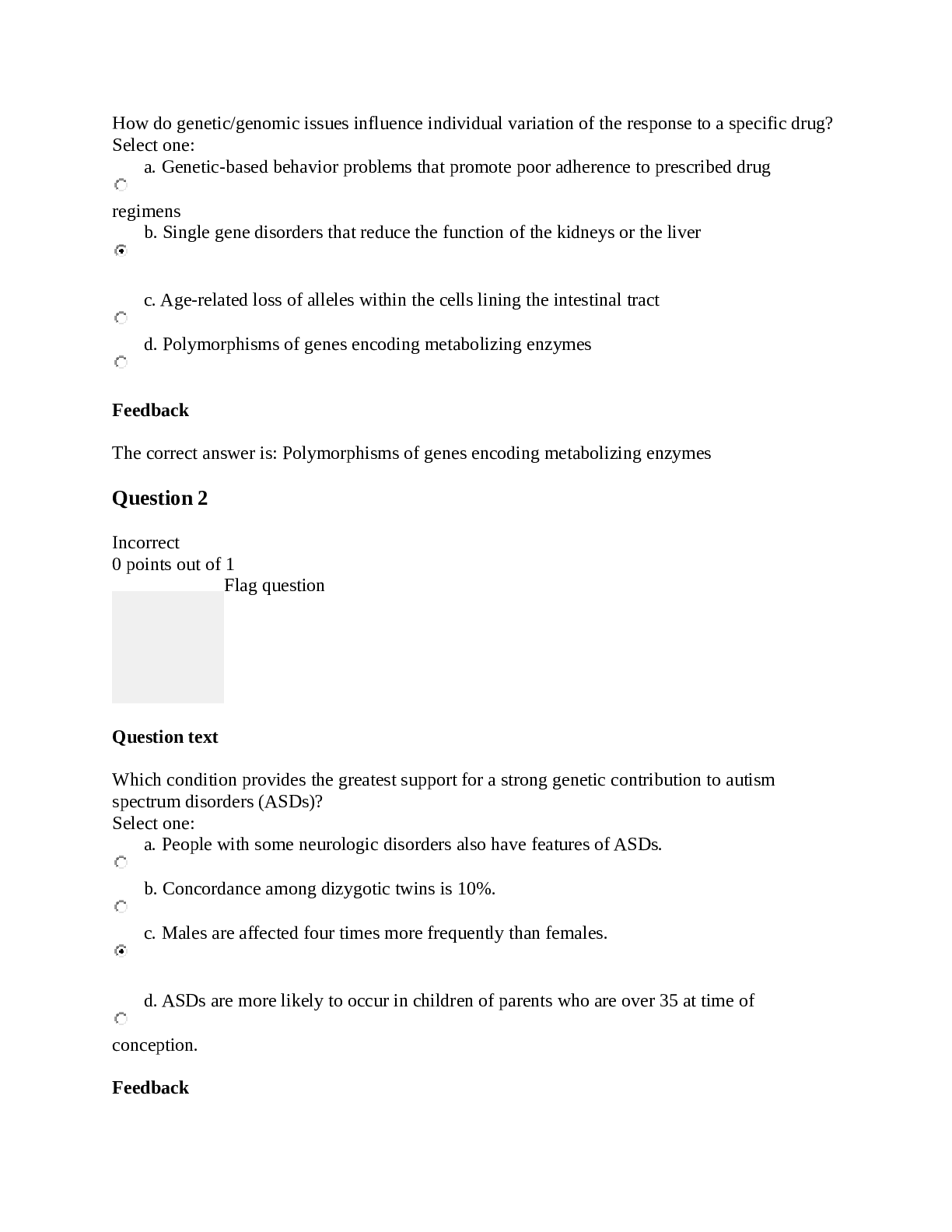
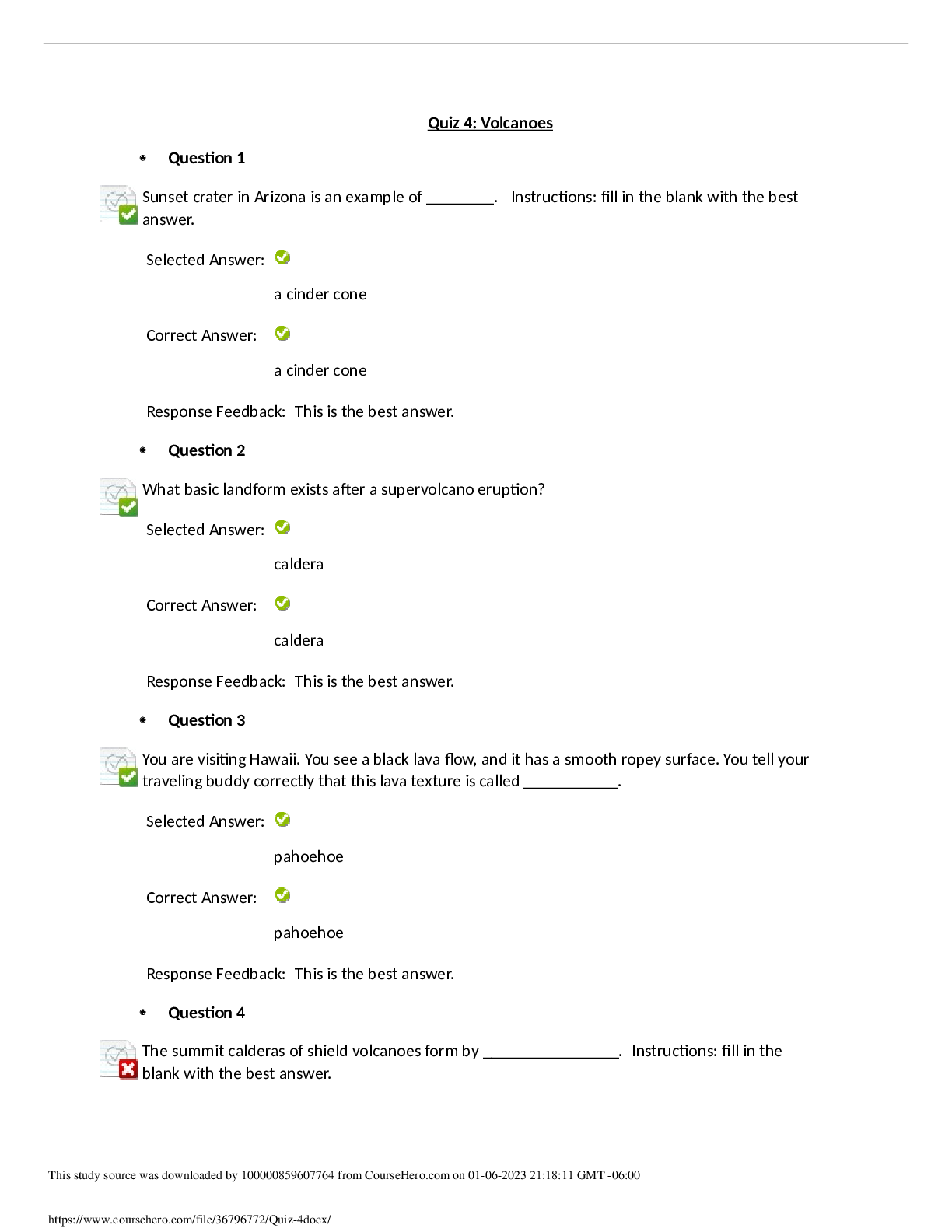
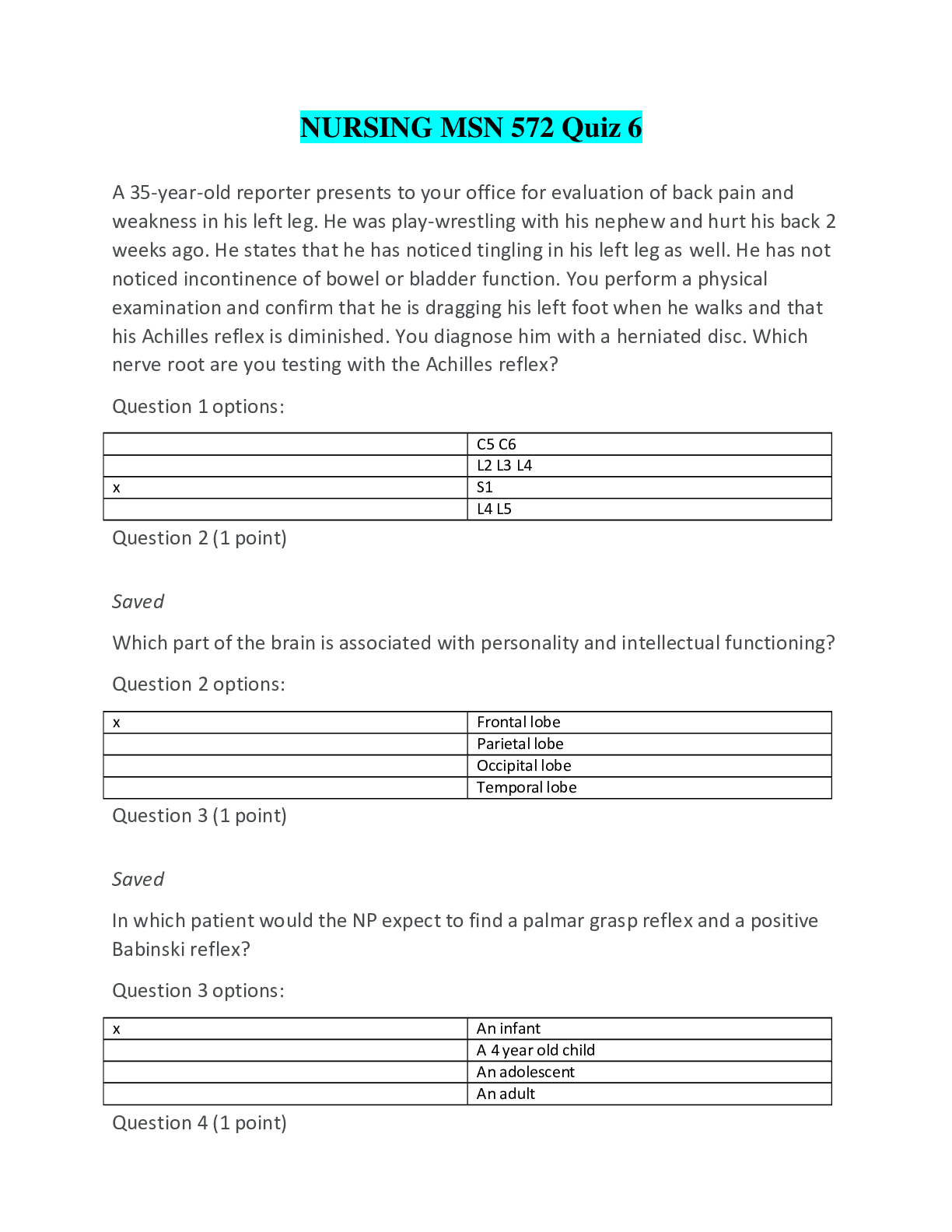
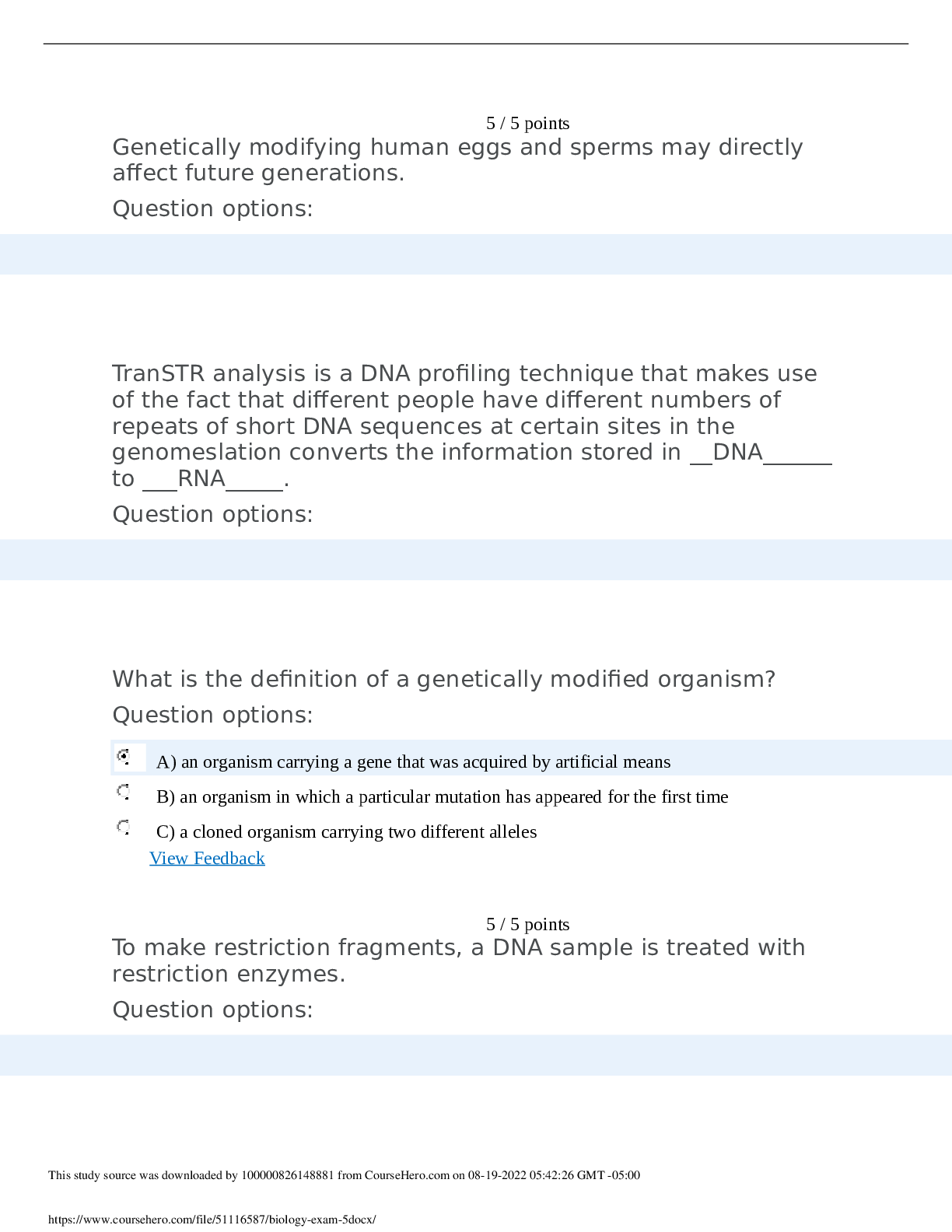
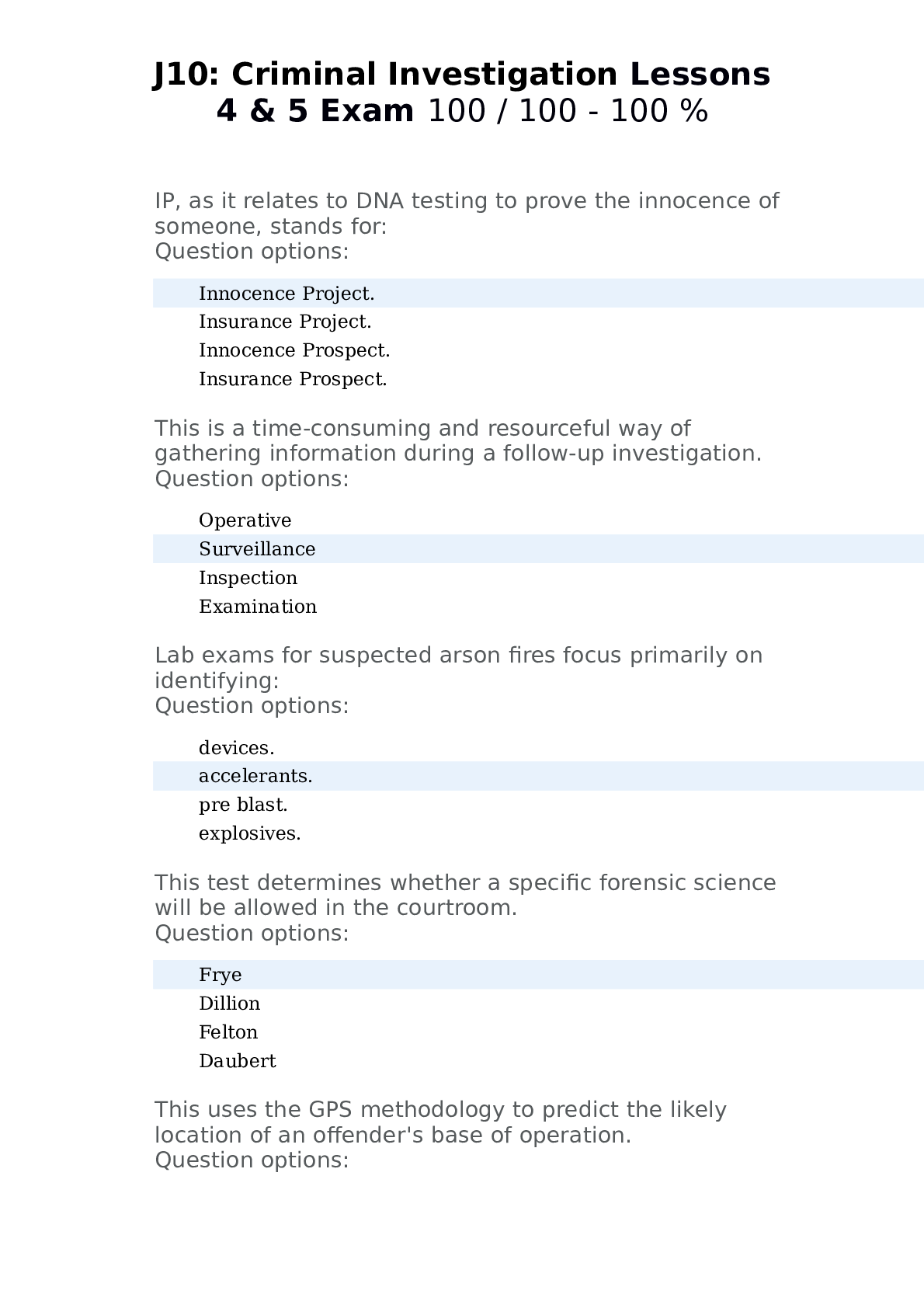
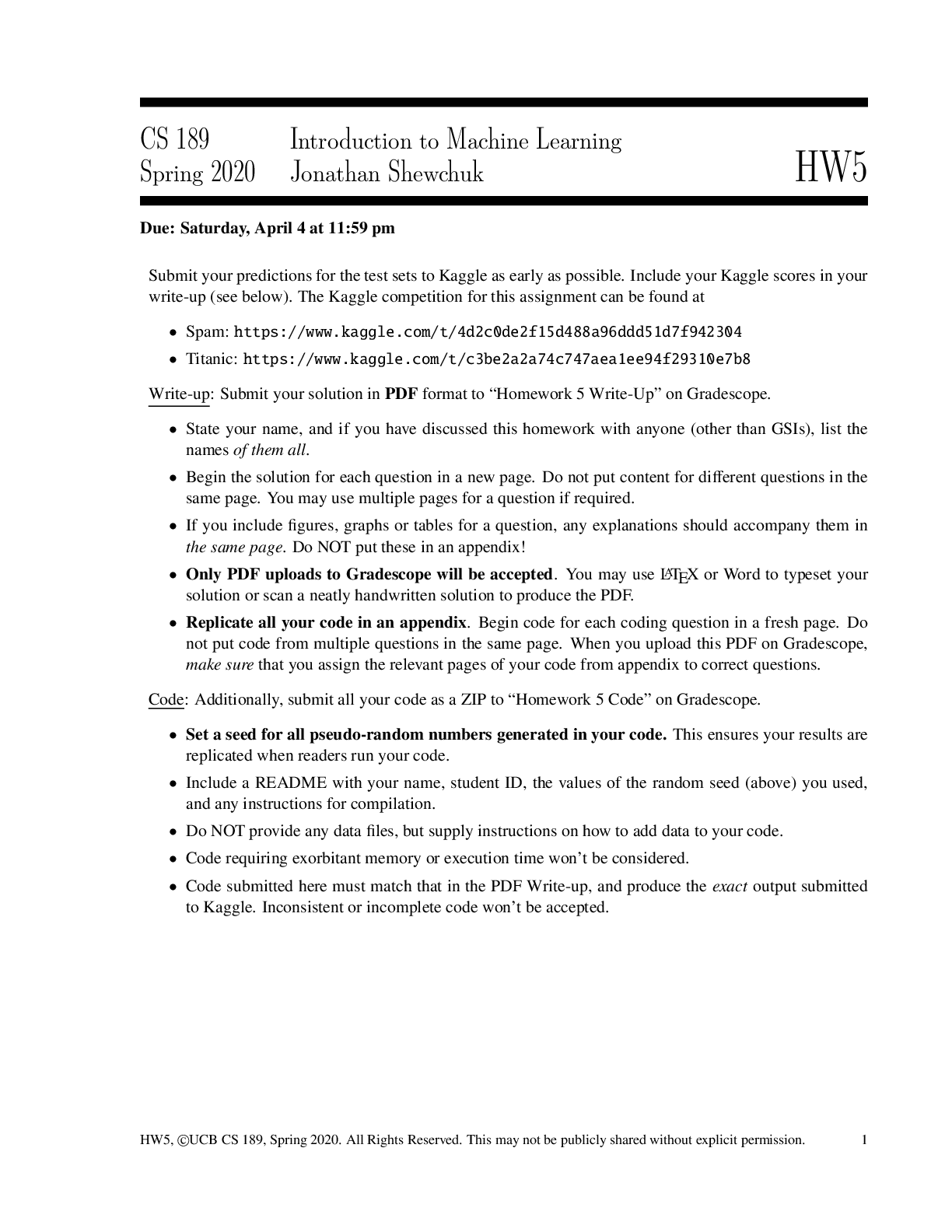

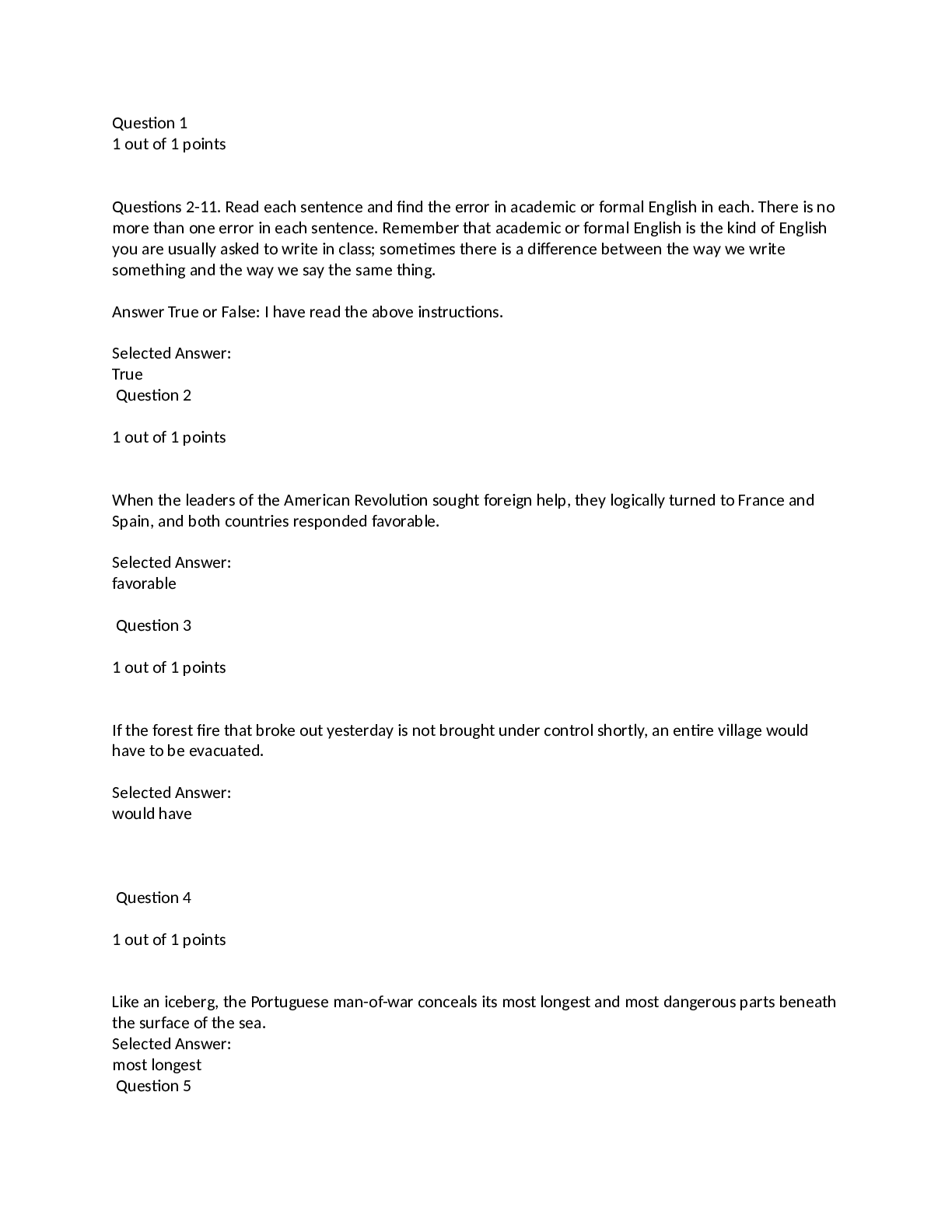
.png)
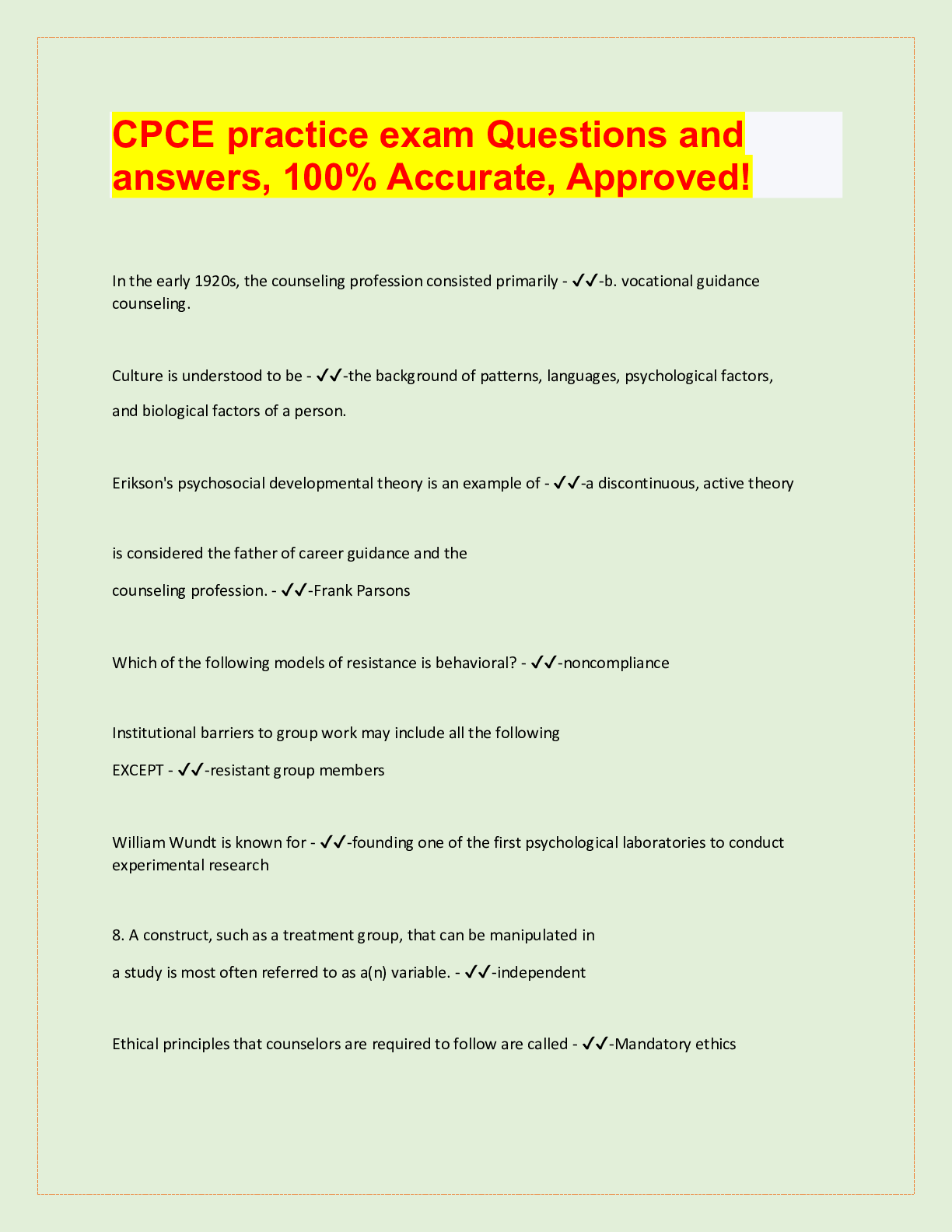
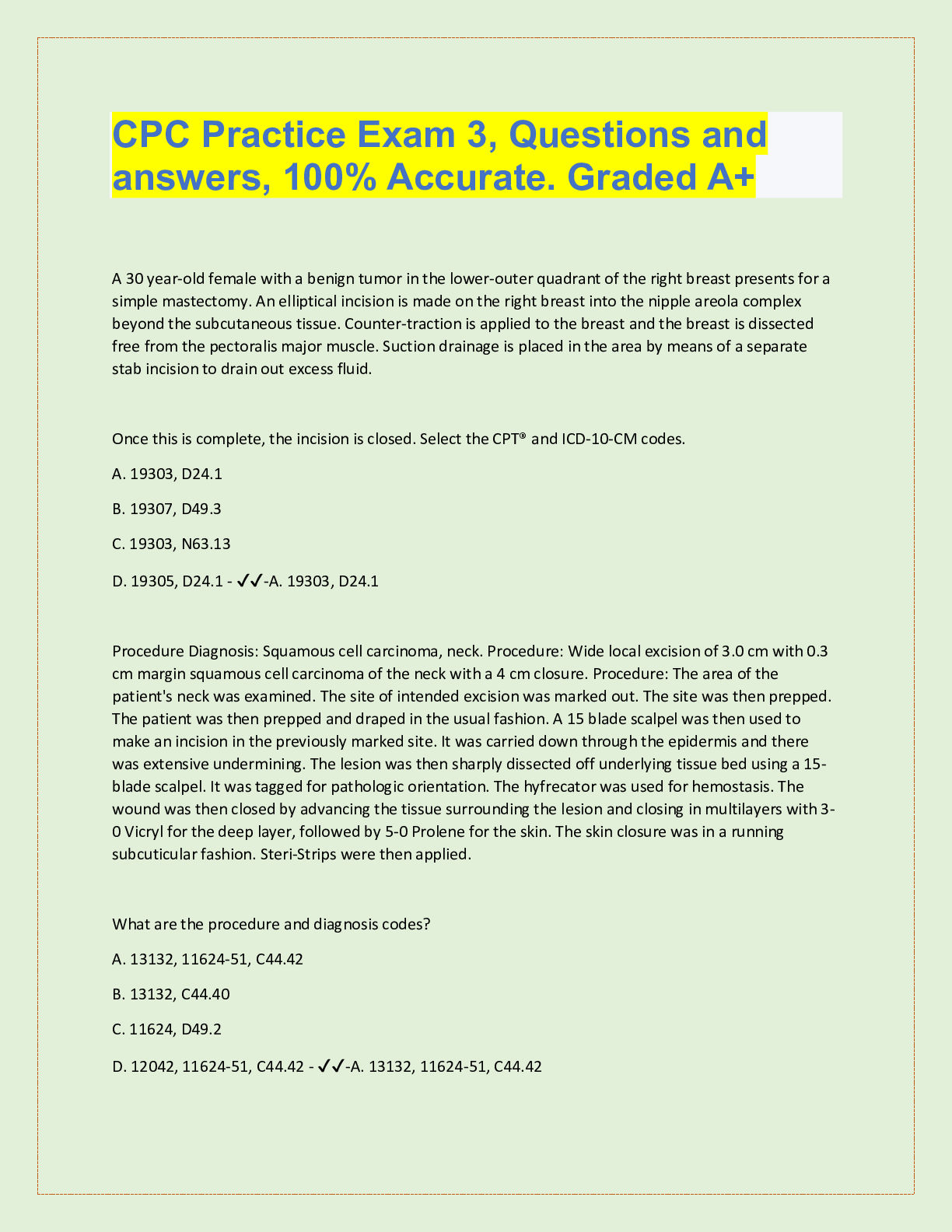
.png)


.png)


.png)

